A Commentary on Islamic Visual Arts
Islamic art is used today as a blanket term for any art with any sort of ties to the Islamic world. It is a term that was created in the nineteenth century by art historians to categorize the arts created by peoples that emerged from Arabia in the seventh century. Despite being a term so loosely defined, Islamic art definitely has some recurring traits and themes, with influences from Arabian, early Christian, Persian, and Turkish art. I will be discussing Islamic visual arts from 600-1500 C.E.
Some identifying features of Islamic visual arts include abstract representation, floral patterns, repeating geometric patterns, Arabic calligraphy, and more.
Another component of the symbolism in Islamic arts are the colors used. In a research paper on color in Islamic art, Gholamreza Mehri said that "The artist tries not to use different and contrasting colors which deprive the human soul of peace and comfort" He also defines certain meanings that different colors represent; "White and blue colors impress the purity of soul, red creates the impression of the fire and blood, yellow inspires the gladness, green is the symbol of Islam and purple shows the silence and death in Islamic art." He mentions that black and white are not considered colors, merely representative of contrast; White is considered to symbolize purity and cleanliness, and black to symbolize secrecy. It is important to note that blue and white are very commonly used colors in Islamic arts.
An important piece of Islamic art is aniconism, which is the absence of artistic representations of certain figures in art, due to religious reasons, In Islamic art, the belief that creation is only a job for God, leads to artists not depicting the human form in their work, especially in religious artworks.
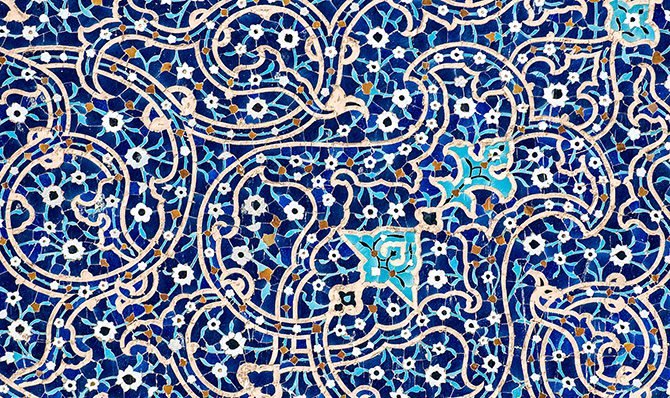
https://www.invaluable.com/blog/islamic-art-patterns/
Islamic art uses a lot of floral patterns, with the flowers often symbolically representing paradise. These floral designs are often used alongside symmetrical geometric patterns. Islamic art used these arabesque patterns for abstract representation of concepts that were taboo to depict directly. Artists would even go as far as adding small mistakes to their work to represent that God is the only being capable of creating perfection.
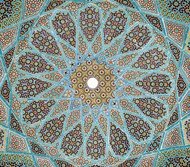
http://www.visual-arts-cork.com/islamic-art.htm
Another element that is very common to find in Islamic art is Arabic calligraphy. Calligraphy is very revered in the Islamic world as being one of the highest forms of art, and Islamic calligraphy is considered to be one of the most elegant and sophisticated writing forms in the world. During the first few centuries of the Qur'an being copied, the scripts and decoration styles change a lot.
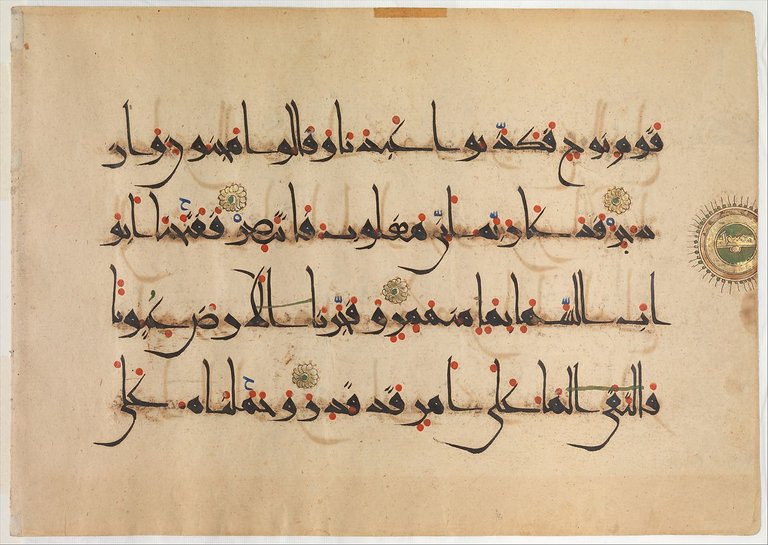
This example belongs to the last volume of a four-part Qur’an manuscript, dated to 993 CE, probably copied in the Iranian city of Isfahan.
https://www.metmuseum.org/art/collection/search/449695

Tile panel with Qur’anic inscription from central Asia or Iran, 16th-20th century, long-term loan to the Honolulu Museum of Art by Doris Duke Foundation for Islamic Art Source: Wikimedia Commons.
The greatest examples of Islamic architecture can be found in holy places, such as The Dome of the Rock (Built in 691–692).

The Dome of Rock ©www.tes.com
Many famous mosques are home to some of the most impressive Islamic architecture in the world, especially considering the time period they were built. The Great Mosque of Samarra was built around 850 C.E., and included a 170 feet tall minaret, with a spiraling design.
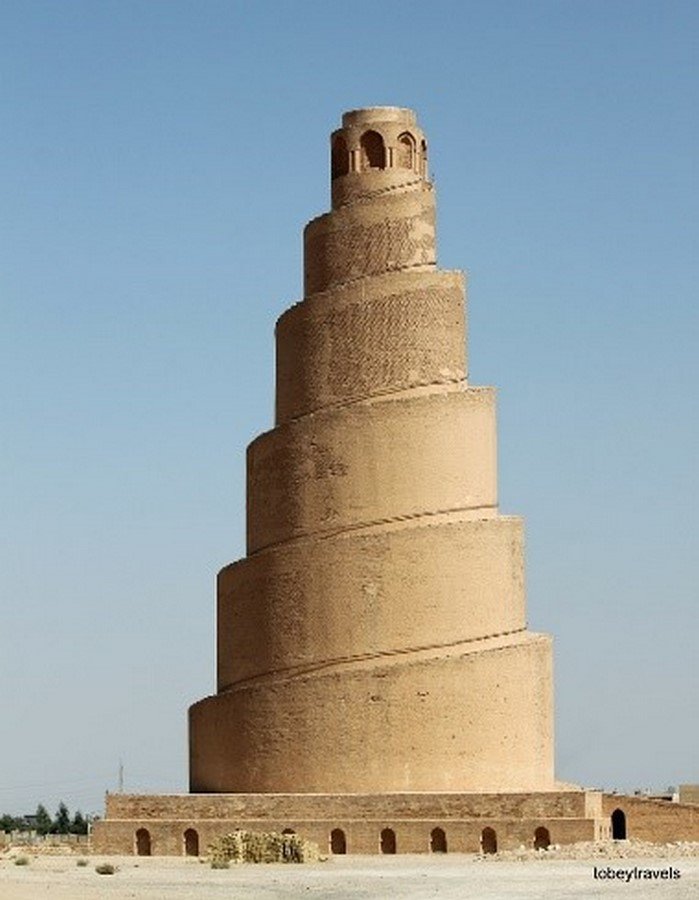
Great Mosque of Samarra ©www.flickr.com
Some identifying features of Islamic architecture include domes, arches, muqarnas (a honeycomb-type pattern), minarets (a kind of tower), hypostyle halls, courtyards, mihrab, and gardens that often have fountains or other decorative water features.
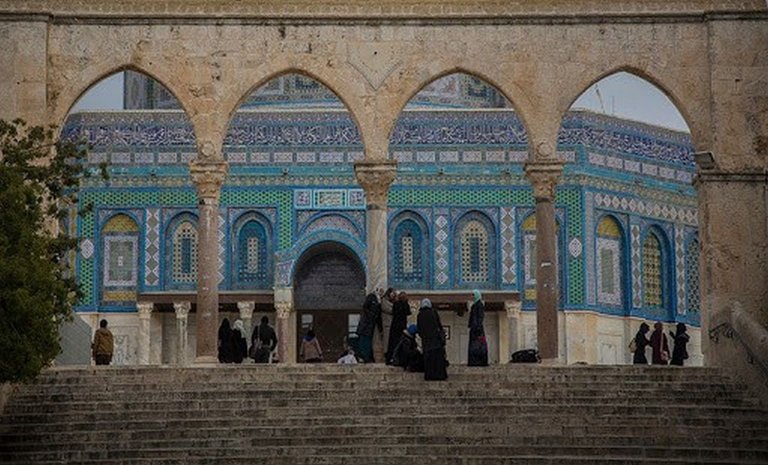
Aqsa Masjid ©aqsapedia.net/
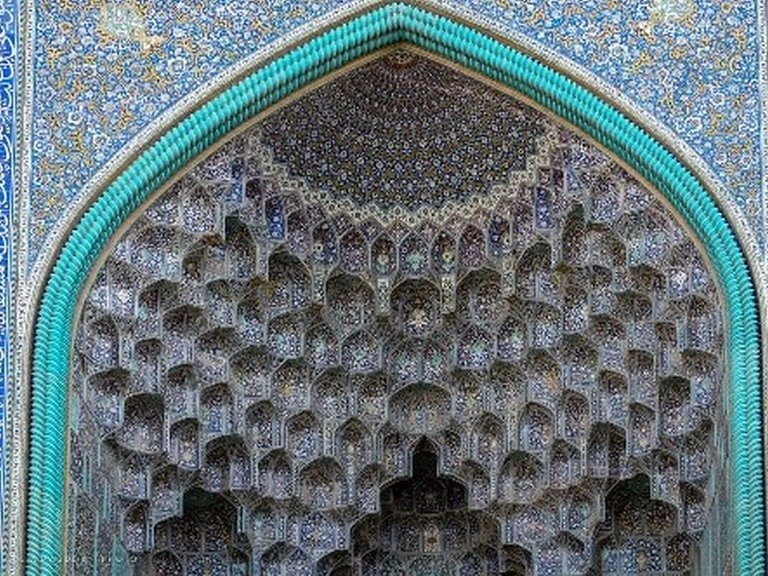
Muqarna ©www.flickr.com
A mihrab is placed in the wall of a mosque and points to the nearest mecca, which is the direction that the congregation faces while they sit and pray.
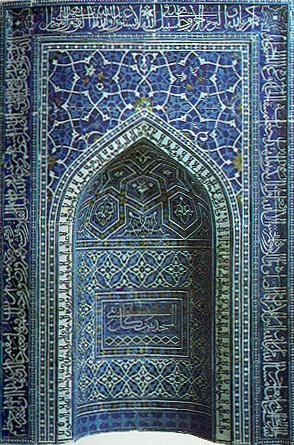
This Mihrab is now at the MET in New York. It is from Iran and dates from the 1300's.
Islamic visual arts range over a variety of mediums including architecture, textiles, parchment, and tile work. It often uses symbolism to represent certain subjects instead of depicting them directly. It has been alive for centuries, and is easy to recognize because of it's sophisticated elegance.
If you are interested in seeing more of my work, I post pictures of them semi-regularly on my Instagram, which is @sid_the_raccoon. All of the photos I use (unless otherwise specified) belong to me. Also, please leave a comment, I really appreciate them. I wish peace, love, and world domination to all of you, and I hope you have a great next 24 hours.
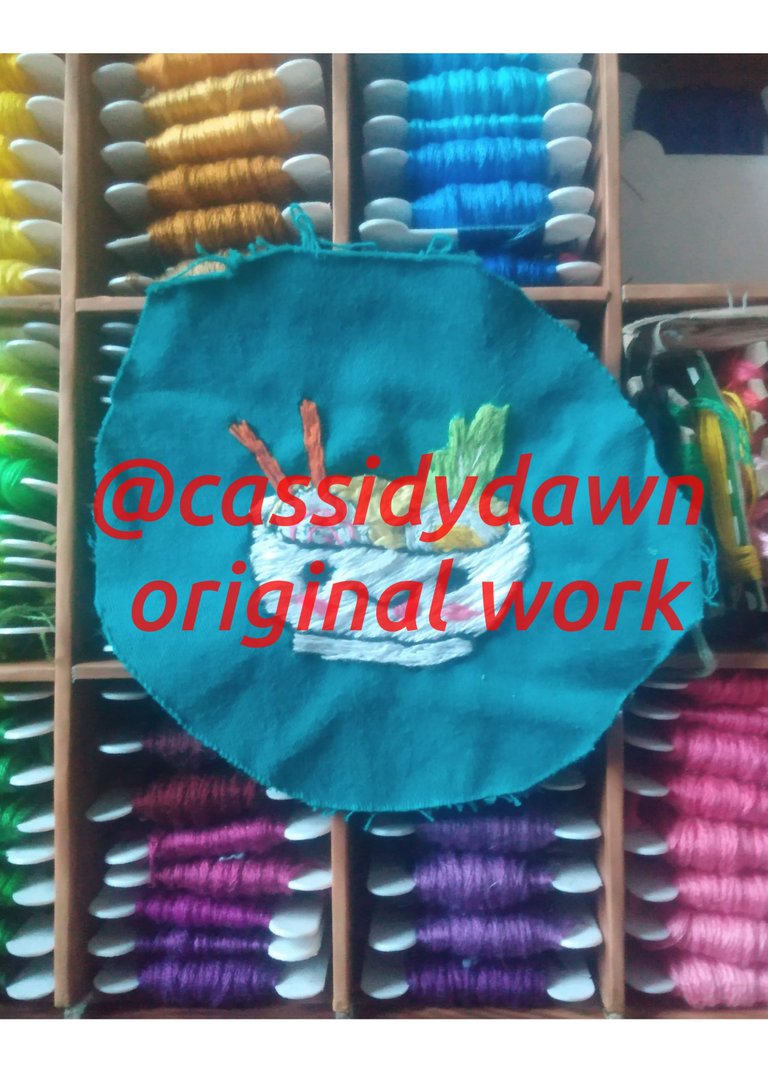
Islamische Kunst wird heute als Sammelbegriff für jede Kunst verwendet, die in irgendeiner Weise mit der islamischen Welt verbunden ist. Dieser Begriff wurde im 19. Jahrhundert von Kunsthistorikern geschaffen, um die Kunst der Völker zu kategorisieren, die im siebten Jahrhundert aus Arabien hervorgegangen sind. Obwohl der Begriff so locker definiert ist, weist die islamische Kunst definitiv einige wiederkehrende Züge und Themen auf, die Einflüsse aus der arabischen, frühchristlichen, persischen und türkischen Kunst enthalten. Ich werde mich mit der islamischen bildenden Kunst von 600-1500 n. Chr. befassen.
Zu den charakteristischen Merkmalen der islamischen bildenden Kunst gehören abstrakte Darstellungen, florale Muster, sich wiederholende geometrische Muster, arabische Kalligrafie und vieles mehr.
Eine weitere Komponente der Symbolik in der islamischen Kunst sind die verwendeten Farben. In einer Forschungsarbeit über Farben in der islamischen Kunst sagt Gholamreza Mehri: "Der Künstler versucht, keine unterschiedlichen und kontrastierenden Farben zu verwenden, die der menschlichen Seele Frieden und Trost rauben." Er definiert auch bestimmte Bedeutungen, die verschiedene Farben repräsentieren: "Weiße und blaue Farben beeindrucken die Reinheit der Seele, Rot erzeugt den Eindruck von Feuer und Blut, Gelb inspiriert die Freude, Grün ist das Symbol des Islam und Violett zeigt die Stille und den Tod in der islamischen Kunst." Er erwähnt, dass Schwarz und Weiß nicht als Farben betrachtet werden, sondern lediglich einen Kontrast darstellen; Weiß gilt als Symbol für Reinheit und Sauberkeit, und Schwarz als Symbol für Geheimhaltung. Es ist wichtig zu wissen, dass Blau und Weiß sehr häufig in der islamischen Kunst verwendet werden.
Ein wichtiger Bestandteil der islamischen Kunst ist der Anikonismus, d. h. das Fehlen künstlerischer Darstellungen bestimmter Figuren in der Kunst aus religiösen Gründen. In der islamischen Kunst führt der Glaube, dass die Schöpfung nur eine Aufgabe für Gott ist, dazu, dass die Künstler in ihren Werken keine menschliche Gestalt darstellen, insbesondere in religiösen Kunstwerken.
In der islamischen Kunst werden viele florale Muster verwendet, wobei die Blumen oft symbolisch für das Paradies stehen. Diese floralen Muster werden oft zusammen mit symmetrischen geometrischen Mustern verwendet. In der islamischen Kunst wurden diese Arabeskenmuster zur abstrakten Darstellung von Konzepten verwendet, die in der direkten Darstellung tabu waren. Die Künstler gingen sogar so weit, dass sie ihren Werken kleine Fehler hinzufügten, um darzustellen, dass Gott als einziges Wesen in der Lage ist, Perfektion zu schaffen.
Ein weiteres Element, das in der islamischen Kunst sehr häufig zu finden ist, ist die arabische Kalligrafie. Die Kalligrafie wird in der islamischen Welt als eine der höchsten Formen der Kunst verehrt, und die islamische Kalligrafie gilt als eine der elegantesten und raffiniertesten Schriftformen der Welt. In den ersten Jahrhunderten, in denen der Koran vervielfältigt wurde, haben sich die Schriften und Verzierungsstile stark verändert.
Die großartigsten Beispiele islamischer Architektur finden sich an heiligen Stätten, wie dem Felsendom (erbaut 691-692).
Viele berühmte Moscheen beherbergen einige der beeindruckendsten islamischen Bauwerke der Welt, vor allem wenn man den Zeitraum bedenkt, in dem sie errichtet wurden. Die Große Moschee von Samarra wurde um 850 n. Chr. erbaut und verfügte über ein 170 Fuß hohes Minarett mit einem spiralförmigen Design.
Zu den charakteristischen Merkmalen der islamischen Architektur gehören Kuppeln, Bögen, Muqarnas (ein wabenartiges Muster), Minarette (eine Art Turm), Hypostyl-Hallen, Höfe, Mihrab und Gärten, die oft Brunnen oder andere dekorative Wasserspiele haben.
Eine Mihrab ist in die Wand einer Moschee eingelassen und zeigt auf die nächstgelegene Mekka, d. h. in die Richtung, in die die Gemeinde blickt, wenn sie sitzt und betet.
*Diese Mihrab befindet sich jetzt in der MET in New York. Sie stammt aus dem Iran und wird auf das Jahr 1300 datiert.
Die islamische bildende Kunst umfasst eine Vielzahl von Medien, darunter Architektur, Textilien, Pergament und Kacheln. Oft werden bestimmte Themen symbolisch dargestellt, anstatt sie direkt abzubilden. Sie ist seit Jahrhunderten lebendig und aufgrund ihrer raffinierten Eleganz leicht zu erkennen.
Wenn Sie mehr von meiner Arbeit sehen möchten, poste ich halb regelmäßig Bilder davon auf meinem Instagram-Account @sid_the_raccoon. Alle von mir verwendeten Fotos (sofern nicht anders angegeben) gehören mir. Bitte hinterlasst auch einen Kommentar, ich freue mich sehr darüber. Ich wünsche euch allen Frieden, Liebe und die Weltherrschaft, und ich hoffe, dass ihr die nächsten 24 Stunden genießen könnt.
Übersetzt mit www.DeepL.com/Translator (kostenlose Version)
Congratulations @cassidydawn! You have completed the following achievement on the Hive blockchain And have been rewarded with New badge(s)
Your next target is to reach 6000 upvotes.
You can view your badges on your board and compare yourself to others in the Ranking
If you no longer want to receive notifications, reply to this comment with the word
STOPCheck out the last post from @hivebuzz: